Meet Sanjakumar Jariwala is currently a postdoc at Biotech Research & Innovation Centre at University of Copenhagen. Former PhD student at DANDRITE, Department of Biomedicine - Neurobiology at Aarhus University.
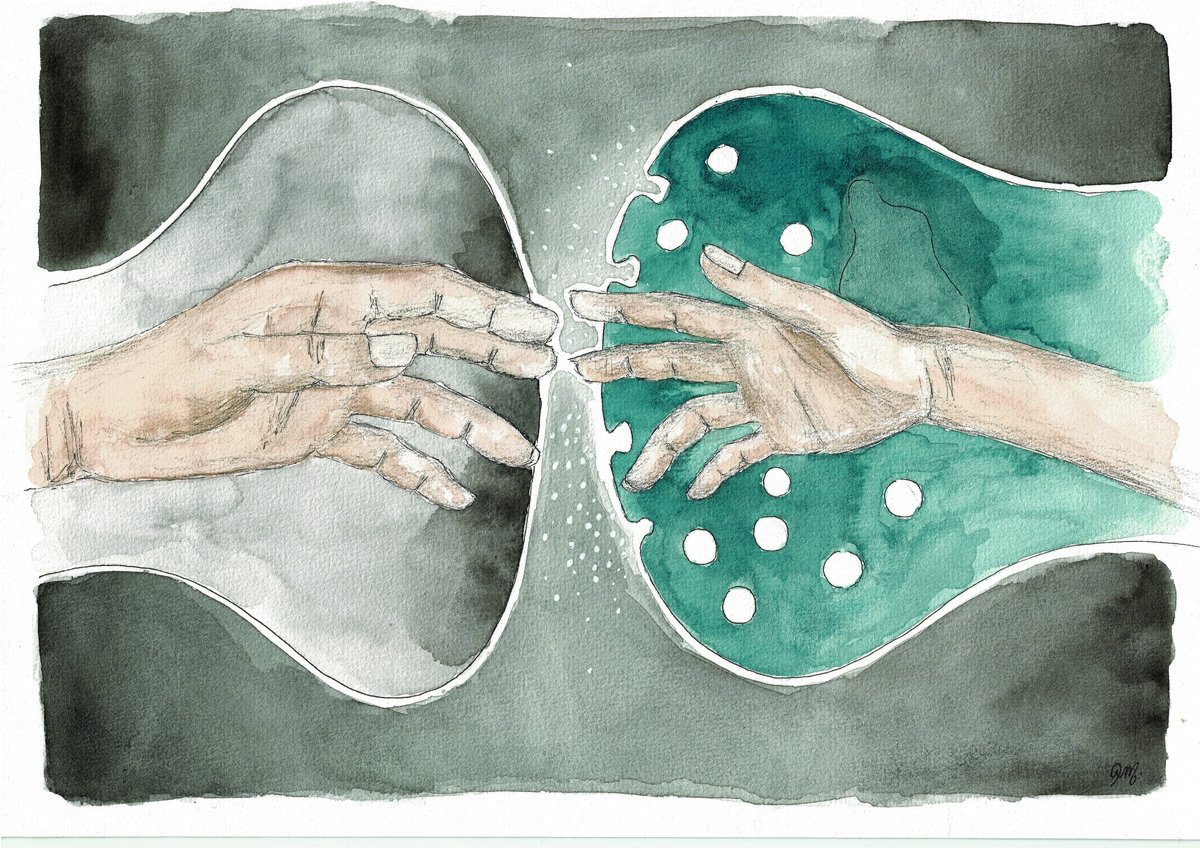
In my project, I am studying the mechanisms of natural forgetting in the context of learning and memory, with an emphasis on relating these processes to long term potentiation (LTP) and depression (LTD) of synaptic strength. It is well established that the strengthening of synaptic connections is related to memory formation, however very little is known about forgetting.
I was inspired by the concept of the reaching hands from “The creation of Adam” by Michelangelo, and by the canonical representation of a synapse.
More of Andrea Moreno’s artwork is available on: www.amscienceart.com
Andrea Moreno is currently an Assistant Professor at Department of Molecular Biology and Genetics - Neurobiology and affiliated to DANDRITE at Aarhus University.

Mateusz Dyla is currently a Senior Scientist at Novonesis. Former postdoc at DANDRITE, Department of Molecular Biology and Genetics - Neurobiology at Aarhus University.

Marco Capogna is a former Professor and Affiliated Researcher at DANDRITE, Department of Biomedicine - Neurobiology at Aarhus University. Marco Capogna unfortunately passed away in 2022 – he was very creatively talented both at drawing and musically.
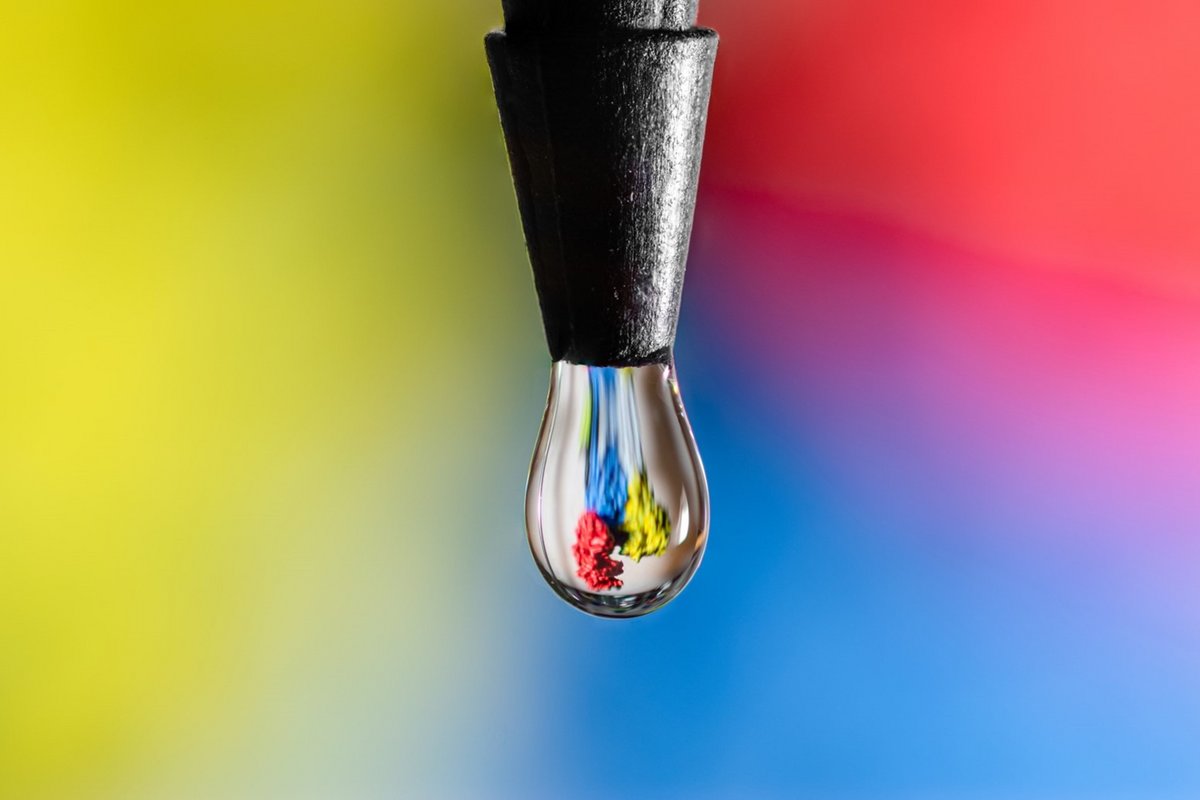
Mateusz Dyla is currently a Senior Scientist at Novonesis. Former postdoc at DANDRITE, Department of Molecular Biology and Genetics - Neurobiology at Aarhus University.
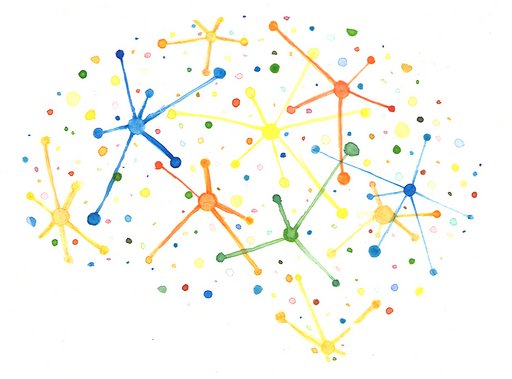
Sarah Christine Christensen is currently a Senior scientist in Translational Imaging at Novo Nordisk A/S. Former PhD student at DANDRITE, Department of Molecular Biology and Genetics - Neurobiology at Aarhus University.

When an idea germinates - an artistic interpretation. The illustration represents the very first beginning of an idea originating from the depth of our brain. Perhaps the idea will perish and be forgotten. Perhaps it will grow bigger, branch out and give rise to new ideas. Perhaps it will grow old and turn into wisdom.
Mette Richner is currently an AC-TAP at the Department of Biomedicine at Aarhus University and holds a PhD in neuroscience. Former Assistant Professor at DANDRITE, Department of Biomedicine - Neurobiology at Aarhus University.

The image represents a presynaptic terminal releasing neurotransmitter contained in vesicles, the effect of which is prevented by blocking arrival to the postsynaptic site. Spontaneous neurotransmitter release could be a way of weakening the synaptic connections that sustain memory.
More of Andrea Moreno’s artwork is available on: www.amscienceart.com
Andrea Moreno is currently an Assistant Professor at Department of Molecular Biology and Genetics - Neurobiology and affiliated to DANDRITE at Aarhus University.
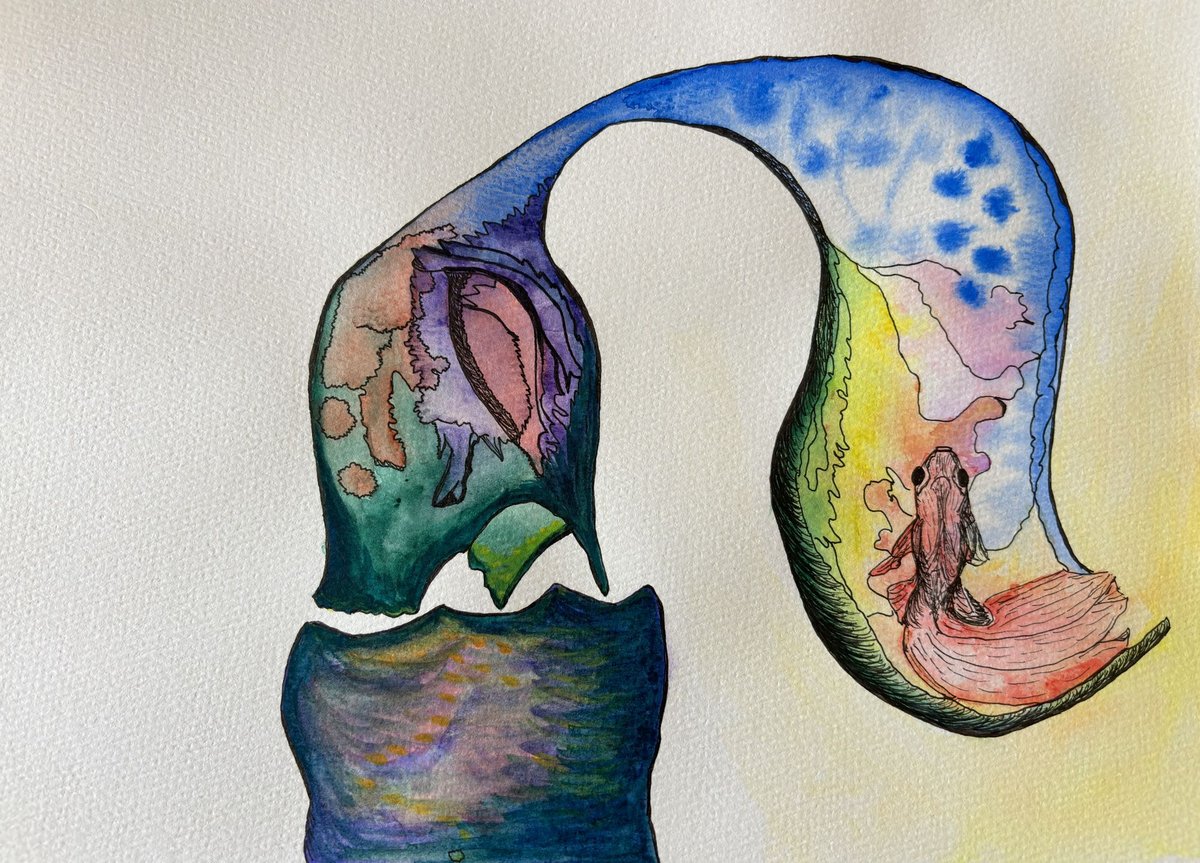
The painting portraits a synaptic connection between brain cells that is about to “bloom” to transmit a neural impulse. You can observe a synaptic bouton, which consists of presynaptic and postsynaptic terminals. These terminals contain various proteins, sorting vesicles, and organelles that are continuously transported between the cell soma and the synaptic terminals. The fish symbolizes actin filaments and their structural dynamics, which is an active cytoskeletal system critical for synapse remodeling, plasticity, and signal transmission. Synapses are fundamental communication sites between brain cells. They are indispensable for all aspects of the brain function including learning and memory. Impaired synaptic biology can have detrimental consequences, leading to various neurological and psychiatric disorders, or even brain death.
Alena Salasova is currently an Assistant Professor at Department of Biomedicine – Neurobiology at Aarhus University
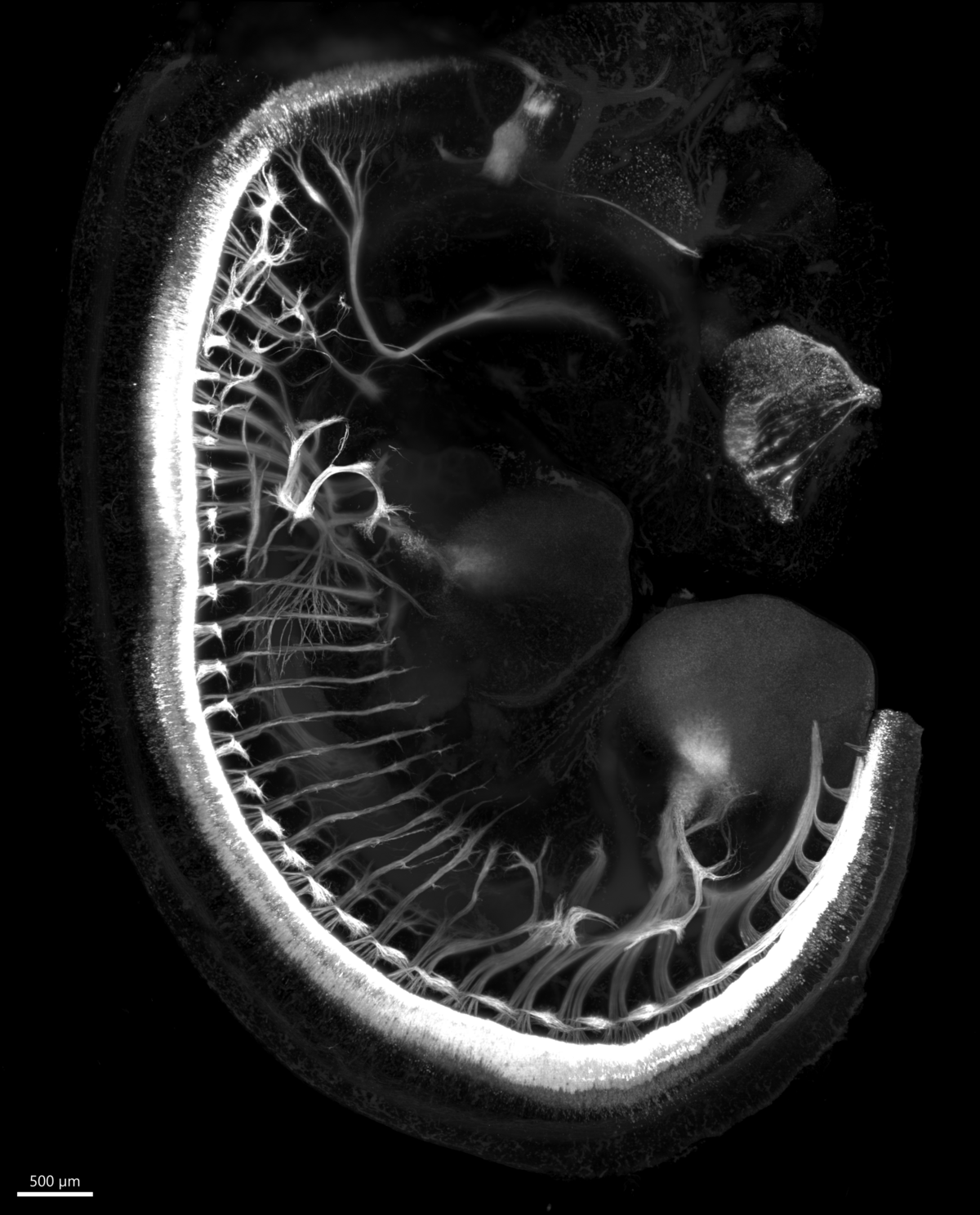
This light-sheet microscopy image captures an intact mouse embryo frozen in time and space. The fluorescent signal highlights every single motor neuron in the organism. Motor neurons are specialized cells that transmit impulses between the brain and muscles, allowing us to move, speak, and smile. By making the embryo transparent, we can trace and reconstruct motor nerve growth in 3D with high precision. Indeed, this approach enabled us to visualize developing motor neurons in intact wild-type and mutant embryos, allowing us to image, reconstruct and measure 19 distinct motor nerves with a precision of a few micrometers. Our findings were recently published in the scientific journal Cell Reports (https://doi.org/10.1016/j.celrep.2023.113333).
Embryonic development requires a detailed roadmap that guides cells to their final destinations, roles, and functions. Understanding these processes can help develop new therapies for various neurological disorders and spinal cord injuries.
Josef Lavicky is currently working at Masaryk University, Faculty of Medicine, Department of Histology and Embryology; Brno Czech Republic. Alena Salasova is currently an Assistant Professor at Department of Biomedicine – Neurobiology at Aarhus University
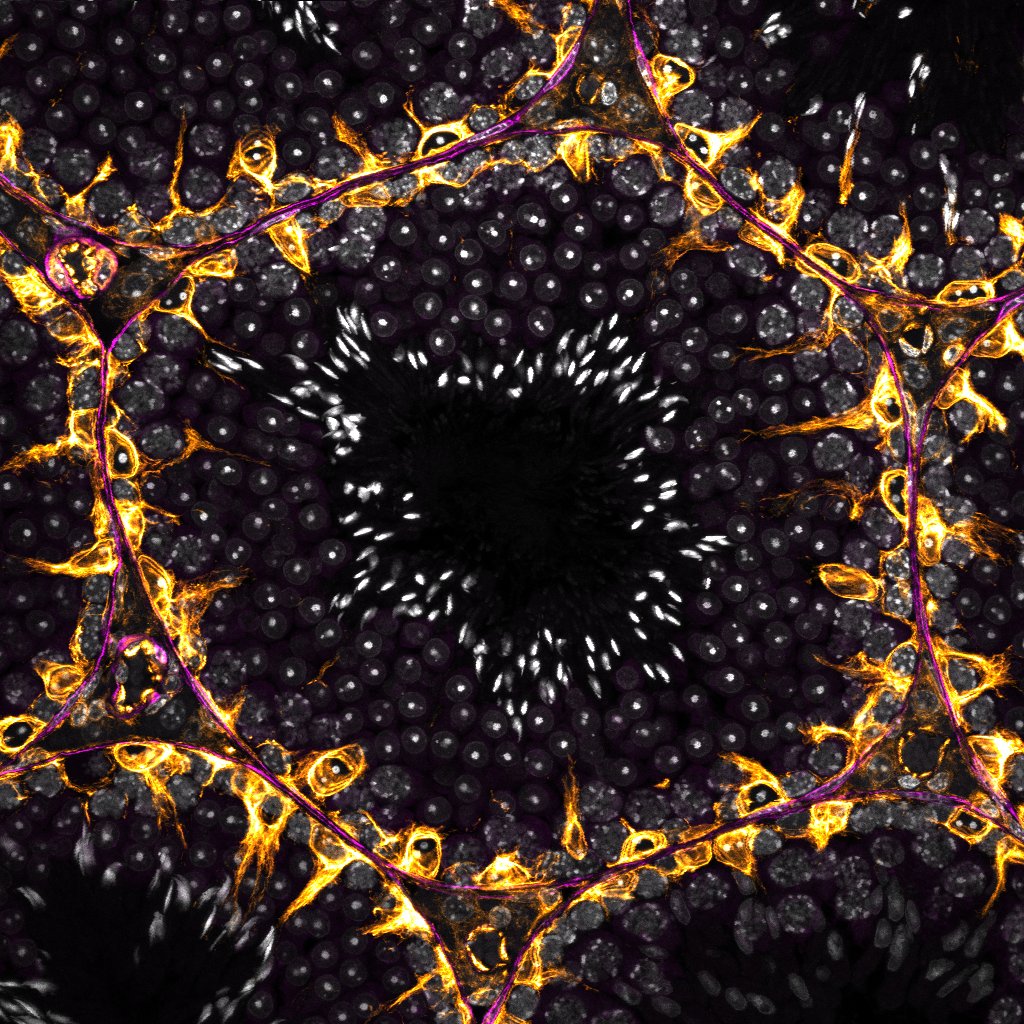
Sperm is created in the seminiferous tubules of the testis via the sequential process of spermatogenesis, which converts germ cells into mature sperm containing concentrated nucleic matter, which holds genomic information. This process is dependent on the work of Sertoli cells within the tubules, which support and nourish the developing sperm cells. In this image, individual tubules are surrounded by basal lamina layers stained for smooth muscle actin (purple), Sertoli cells are stained for vimentin (yellow), and sperm cells and progenitors are identified by nuclear marker DAPI (white). From the edge of each tubule into its centre, it is possible to see the stages of spermatogenesis progress, culminating in an inner layer of bright white sperm cells ready to be shed: a circle of pre-life. The section was stained via immunohistochemistry and imaged on a Leica STELLARIS 8.
Silke Blair Chalmers is currently a postdoc at Department of Biomedicine – Neurobiology at Aarhus University.
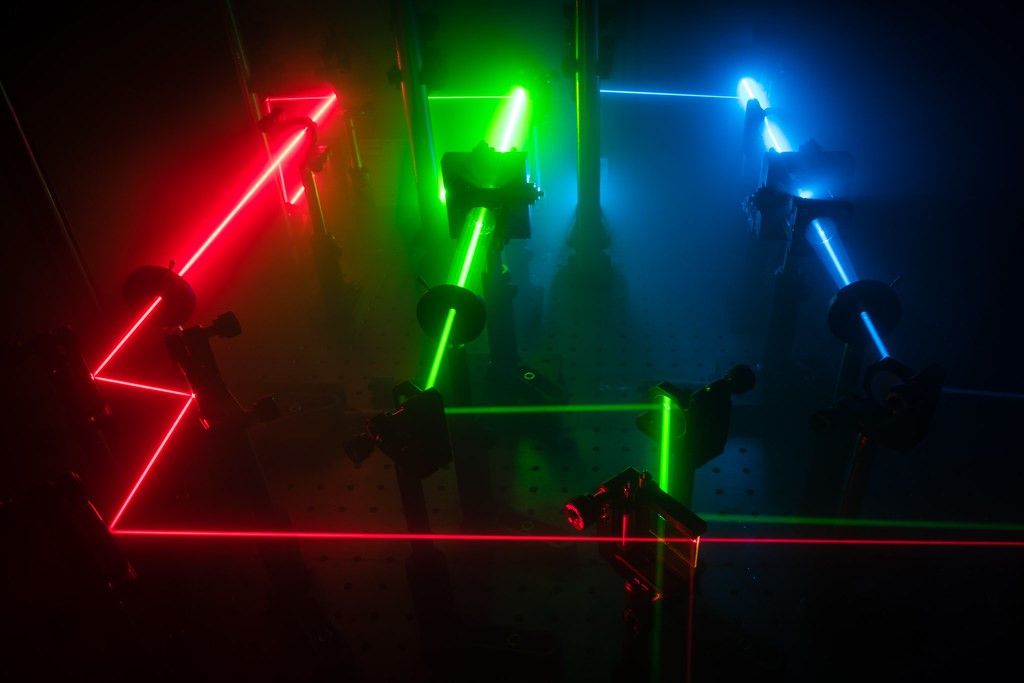
This picture presents a custom-built microscope, equipped with three powerful lasers and accessories controlling their properties, including mirrors to direct laser beam paths. Such microscopes can be used to study proteins labeled with fluorescent dyes. The laser beam paths are typically not visible in the air, so I poured some ‘smoke’ from dry ice sublimation onto the microscope. This resulted in the laser beams being scattered by the small particles suspended in the air, revealing laser beam paths in their full glory.
Mateusz Dyla is currently a Senior Scientist at Novonesis. Former postdoc at DANDRITE, Department of Molecular Biology and Genetics - Neurobiology at Aarhus University.